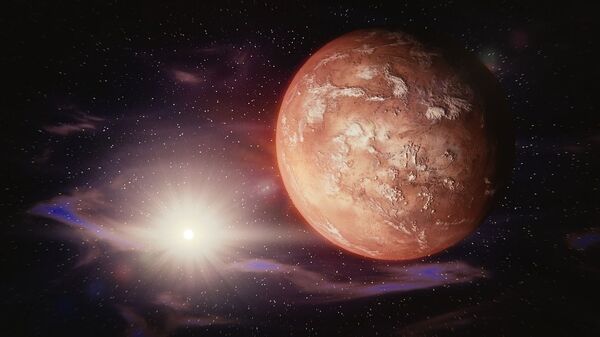A study conducted by scientists from Rice University and State University of New York at Stony Brook has revealed that some climate conditions at the Gale Crater on Mars about 3 billion years ago were rather similar to those observed in some parts of our own planet, SciTechDaily reports.
During the course of their study, the researchers established that it played a key role in how rocks that were formed from sediment were deposited into the crater, which likely was a lake at some point, got "weathered by the climate".
According to the media outlet, while the team used data supplied by the Curiosity rover to gain insight into the "chemical and physical states of mudstones formed in an ancient lake" that the Gale Crater probably once was, they also had to "look for similar rocks and soils on Earth to find a correlation between the planets", since "the chemistry does not directly reveal the climate conditions when the sediment eroded upstream".
"Earth provided an excellent laboratory for us in this study, where we could use a range of locations to see the effects of different climate variables on weathering, and average annual temperature had the strongest effect for the types of rocks in Gale Crater," said Martian geologist Kirsten Siebach, one of the authors of the new study. "The range of climates on Earth allowed us to calibrate our thermometer for measuring the temperature on ancient Mars."
The research showed that the closest match to Mars turned out to be the “makeup of sand and mud in Iceland”.
"As water flows through rocks to erode and weather them, it dissolves the most soluble chemical components of the minerals that form the rocks," Siebach remarked. "On Mars, we saw that only a small fraction of the elements that dissolve the fastest had been lost from the mud relative to volcanic rocks, even though the mud has the smallest grain size and is usually the most weathered."
"This really limits the average annual temperature on Mars when the lake was present, because if it were warmer, then more of those elements would have been flushed away", she added.

